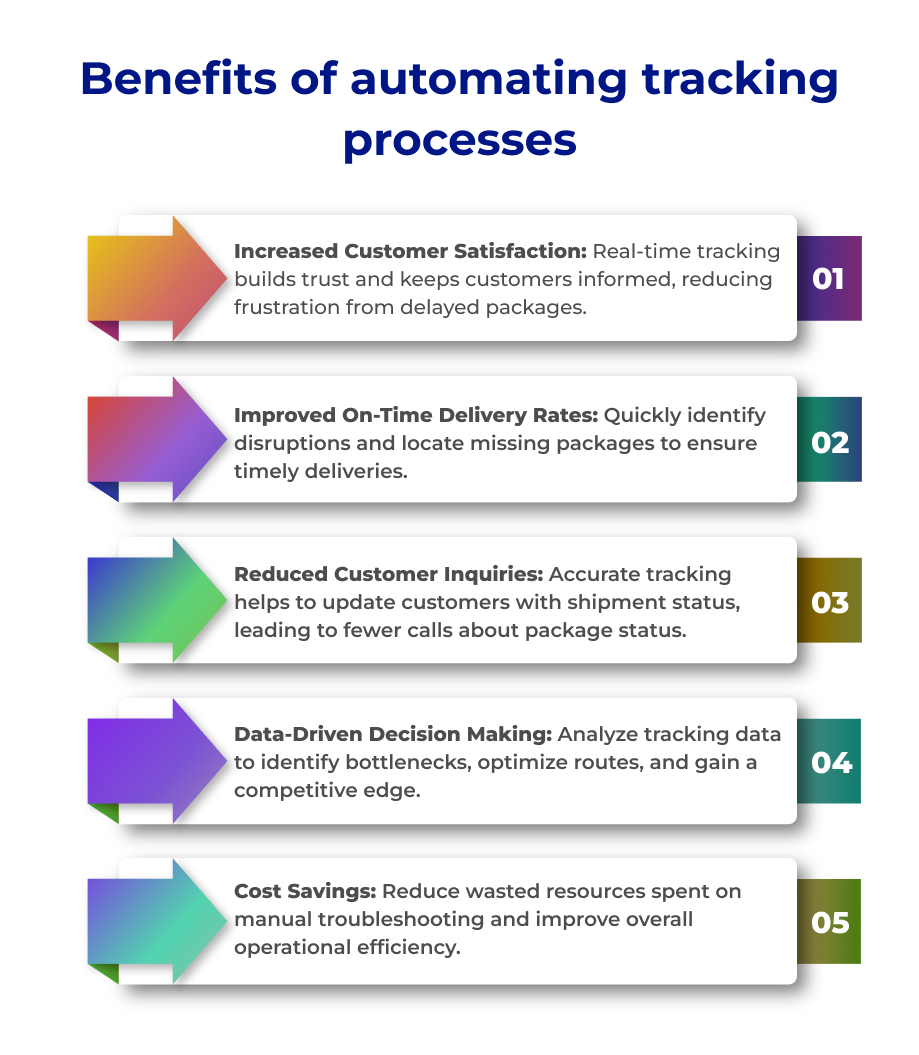
How Workflow Automation Eliminates Tracking Inconsistencies

Did you know that human error plays a significant role in shipment tracking inconsistencies?
This translates to lost packages, frustrated customers, and wasted time for your logistics team. In today’s fast-paced delivery landscape, accurate and transparent tracking is necessary.
A study by Deloitte found that 83% of consumers consider shipment tracking a crucial factor in their purchasing decisions. Unfortunately, manual tracking systems are prone to errors and delays, leaving logistics companies and their clients in the dark.
The good news is that workflow automation can help eliminate these inconsistencies and create a smoother, more transparent logistics experience. By automating key tracking processes, you can ensure real-time data accuracy and provide peace of mind to your clients.
The High Cost of Tracking Inconsistencies
Inconsistent tracking data isn’t just a minor inconvenience – it carries a significant cost burden for logistics companies. Here’s how:
- Customer Dissatisfaction and Lost Trust: Frustration sets in when customers can’t reliably track their shipments. Without real-time shipment tracking, businesses lose valuable insights, leading to confusion, missed deliveries, and loss of trust in your brand’s ability to deliver.
- Delays in Resolving Shipment Issues: Inaccurate tracking information makes it difficult to pinpoint the location of a lost or delayed package. This delays your team’s ability to investigate the issue and implement solutions, leading to longer customer wait times.
- Increased Operational Costs Due to Manual Troubleshooting: Manual investigation of tracking discrepancies is time-consuming and resource-intensive. Your team spends valuable hours sifting through data and contacting various parties to locate an errant package, all while neglecting other crucial tasks. These wasted resources translate into increased operational costs for your business.
How Workflow Automation Streamlines Tracking Processes

Manual tracking processes are riddled with human error and prone to delays. Thankfully, workflow automation solutions offer a powerful alternative, streamlining tracking processes and ensuring consistent, real-time data. Here’s how:
- Barcode scanners, RFID tags, and sensor technology can automatically capture crucial information at each stage, from order picking in the warehouse to final delivery. Warehouses and distribution centres that implement RFID systems in their processes take inventory visibility and availability from 2% to 20%.
- Error-checking algorithms and quality assurance protocols within automated systems drastically reduce the room for errors.
- Workflow automation solutions seamlessly integrate with your existing systems, creating a single data source. Data captured at each point is automatically updated across your entire platform, providing a clear and consistent view of your shipments.
- Workflow automation can trigger automatic notifications based on pre-defined events. For example, customers can receive instant alerts when their order is shipped, arrives at a delivery hub, or is out for final delivery. This keeps everyone informed and eliminates the need for manual inquiries.
With a real-time tracking system, businesses can monitor shipments at every step. Sensors transmit data about the location and status of shipments, allowing customers to see exactly where their packages are and when they’ll arrive. This helps businesses optimize routes and reduce fuel consumption while customers enjoy peace of mind and improved satisfaction.
Examples of automated workflows in logistics
- Order Fulfillment: Automatic data capture ensures accurate picking and packing of orders. The system triggers notifications to the warehouse team and automatically updates inventory levels.
- Shipment Tracking: As packages move through the logistics network, automated barcode scans or RFID tags update the tracking system in real time. Customers receive automatic alerts with the latest location and estimated delivery time frame.
- Delivery Confirmation: Upon successful delivery, automated workflows capture proof of delivery (POD) electronically, eliminating the need for manual signature capture. Customers receive a confirmation notification with the time and location of delivery.
Implementing automated workflows at every stage can help you provide faster, more accurate, and more efficient customer service and streamline your operations.
Benefits of Improved Tracking Accuracy
Eliminating tracking inconsistencies unlocks a range of powerful benefits for your logistics business. With accurate, up-to-date tracking information, consignees can see exactly where their packages are and when they can expect them to arrive. This transparency builds trust and fosters a more positive customer experience.
Accurate tracking lets you quickly identify any delays or disruptions in your supply chain. This enables your team to react swiftly, locate missing packages, and implement solutions to get shipments back on track. The result? Improved on-time delivery rates and a significant reduction in customer inquiries about lost or delayed packages.
A wealth of valuable data is hidden within tracking information. By analyzing this data, you can identify bottlenecks in your processes, optimize delivery routes, and make data-driven decisions to improve overall efficiency. This translates to cost savings, increased productivity, and a competitive advantage in the logistics industry.
Getting Started with Workflow Automation
Are you ready to eliminate tracking inconsistencies and unlock the power of real-time data? Here’s how to get started with workflow automation.
Identify Key Tracking Pain Points: Start by analyzing your current tracking processes. Pinpoint areas where manual data entry, delays in updates, or human error create inconsistencies. Focus on the stages that cause the most customer frustration or operational challenges.
Select a Suitable Workflow Automation Solution: Not all automation solutions are equal! Look for a system specifically designed for the logistics industry, with features like barcode scanning integration, real-time data dashboards, and automated notification triggers. Ensure the solution offers seamless integration with your existing infrastructure, like the warehouse management system (WMS) and other platforms. It ensures smooth data flow and eliminates data silos.
Automation Transforms Tracking
In today’s logistics landscape, accurate and transparent tracking is the key to streamlined operations and improved customer satisfaction. Gartner states that 38% of organizations in the logistics sector are continuously looking to improve their supply chain and end-to-end processes.
At iSquare, we understand the challenges you face, and we’re here to help you overcome them. With our industry-leading workflow automation solutions, you can eliminate tracking inconsistencies, gain real-time data visibility, and unlock the full potential of your logistics operations. Don’t let manual tracking processes hold you back.
Do you want to transform your tracking experience?
Contact us today for a free consultation. Let our team of experts help you improve customer satisfaction, optimize your operations and experience the power of automation.














